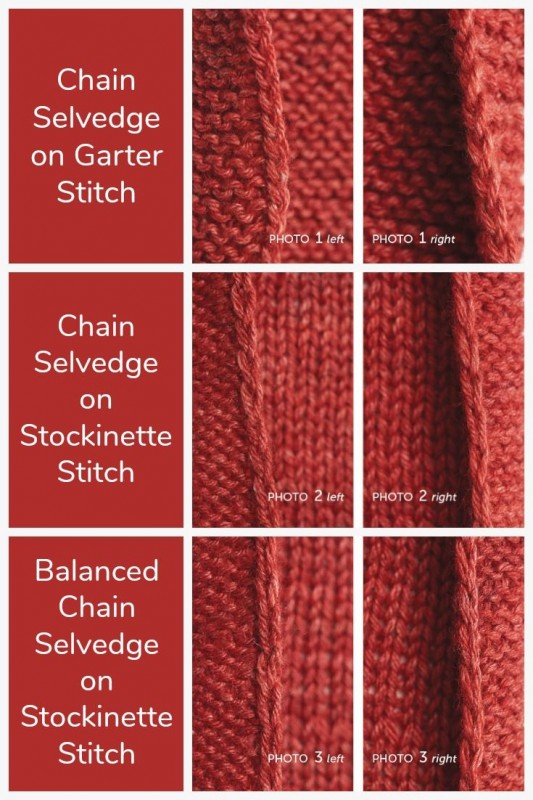Understanding Different Types of Selvedge Stitches in Knitting


Chain Selvedge Stitch
The first kind of selvedge stitch is made in the form of a chain. It is most often used in work by experienced knitters. It looks like a smooth and neat chain on two sides of the work. This method of designing the edges is used in the processing of plackets in sweaters, collars, and other details. If you want to tie such an edge, then in the process, you always need to remove the first stitch, leaving the main yarn behind the knitting needle. It does not matter at all which row now fits: with knit stitch or purl. And the last stitch should be a purl.
Knotted Selvedge Stitch
If you want to knit a strong, tightened side with knitting needles, it can even be a vertical buttonhole or the edge of a plaid, then the use of knotted selvedge stitches is the most suitable for you. Although they are not so popular among knitters, beginners will like the execution technique for its simplicity and functionality. As in the previous method, you need to remove the setup stitch and leave the yarn behind the knitting needle. The last link in each row is a knit stitch.
Double Selvedge Stitch
For those who want to decorate the edges of a scarf in a nice way, which is knitted in any rib, or if it is necessary to densify the sides of your work, then in this case, double selvedge stitches will be needed.
Slip the first stitch in the right side row, knit the second with knit stitches. Complete the strip like this: slip the last but one stitch, and the remaining one is knitted through the back of the second loop. Slip the first stitch in the wrong side stripe, holding the yarn in front of the work, knit the next as purl. At the end of the row, slip the last but one stitch, and the yarn remains in front of the work, knit the last stitch as purl through the further back loop. Before you start knitting and counting stitches, note that you will need four more selvedge stitches.
Decorative Selvedge Stitch
The next variant is called decorative. It is made on edges of belts, scarves, straps, and other works. It is knitted using 2 stitches at the beginning and end of the row. Slip the first stitch in the right side row as a knit stitch, and the next one is knitted as purl. In the end of the stripe, make the last but one stitch as purl, and the last one slip without knitting. When you turn your work to the wrong side, knit the first 2 stitches and the last 2 stitches as purls.
Pearl Edging
Pearl edging is used when you want to decorate your shawl, scarf, or plaid edge. Such an edge won't stretch or wrap. Knit such selvedge stitches on 3 stitches from both sides of the work. Knit the 1st stitch of the right side as purl, the next stitch as knit stitch, and then purl again. When finishing the 3 stitches, follow the same analogy as previously described. Making the reverse wrong side row, knit the first and last links of the working stripe in the following way: 1 knit stitch, 1 purl, 1 knit stitch.
